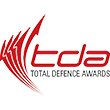Truth be told, it was just a matter of time..
We are living in a modern-day society where technology is ever-evolving and constantly being reviewed to see if our processes can be bettered as time goes by. While there have been many discussions on the possible digitalisation of education, it was difficult to fathom whether this was even doable, until now. Enter COVID19.
As MENDAKI Tuition Scheme (MTS) tutors, with the pandemic slowly getting worse and threatening to leave us with the possibility of having to commence lessons from home, it was a huge scramble to stay afloat when the news of a national circuit breaker hit us first-hand. Not many of us could safely say that we have mastered the art of teaching from home, no matter how IT-savvy we were. During this circuit breaker, we practised what it meant to “learn on the go”. Education had to be fully digitalized.

For starters, the main thing we needed to do was to ensure that we find a way to shift our lesson delivery online. This is a very important step because, in HBL, the tutors are not merely giving out instructions for students to abide by. The delivery of content still had to go on. As such, this gave rise to the exploration and eventual dependence on video conferencing platforms like Google Meet and Zoom in education.
For me, this method of delivery was not without its limitations. Some students experienced issues having lesson timings that were fixed because they had to share devices with their siblings. Some students gave feedback regarding the difficulty of listening online and requested me to find ways to include visual materials alongside the live class, especially my Primary 6 graduating class. As such, I learnt how to pre-record their lessons with online tools such as Loom and Screencastify. This way, apart from pre-recording lessons, I could also include visual stimuli through Powerpoint slides. My students were also better off with this as they could refer to my lesson at their own time and space. In this manner, textbooks and learning materials were now digitalised.
Next on the list was to find a way to assess students’ understanding. For MTS tutors, one routine of habit is to pause and ask students checkpoint questions throughout the lesson. Following that, at the end of the lesson, simple assignments could be given for their students to assess their learning. Physically it was easier, yet now when cooped up in a virtual realm, we had to figure out how to go about digitalising their worksheets and still provide opportunities to check their understanding and have their queries answered.
To solve this, I tapped on learning platforms such as Google Forms to digitalise my worksheets. Applications like Slido and WhatsApp were also utilised during live lessons for my students to air their views or type in their queries for further clarification. One memory I would never forget was having to go through the answers of a Primary 6 comprehension text entirely via WhatsApp Voicenote and photo screenshots. It would not have been seen as a viable method on a normal day, but during the circuit breaker, this was a surprisingly effective method of engaging the students and assessing their understanding.
Now that the previous hurdle was settled, the upcoming one came in the form of finding a way to digitalise individualised feedback for students. This is an important step in learning as students need to find out what they excelled in and where they can improve upon. Feedback is usually given physically by their tutors. Hence, in the virtual realm, where there was completely no physical presence, giving individualised feedback was a challenging process.

In order not to compromise on the quality of learning for students, as a tutor, I watched YouTube tutorial videos and joined educator groups online to learn from the experts. Through this learning adventure, we learnt to use applications such as KAMI (a Google Extension), Write On PDF and OneNote in order for us to continue giving individualised feedback through commenting online on my students’ individual work, or marking an online version of my students’ assignments and then returning it to them. I used my newfound knowledge in this aspect to assess and provide feedback for my students’ composition and situational writing assignments individually. It was heartening to see them try to interpret the feedback and improve on their various weaknesses as we went along.
Finally, adding on to the complexity, the MTS tutors were also constantly reminded of the need to ensure their students remain motivated and had to find ways to induce the “joy of learning” in students. With the lack of social interaction threatening the state of their morale, we tried our best to provide and come up with an array of interesting home-based lessons ranging from online game tools for education, podcasts and social media-based assignments that would potentially engage the students and lift their spirits. This gave rise to tutors experimenting using online tools such as Kahoot, Decktoys and Quizizz.
Looking back from when it all first started, the learning curve has been steep for MTS tutors, even till today as we continue learning and preparing for the unknown. The battle is not over. Moving along, we have witnessed how education can indeed be digitalised. However, is it optimal and the best way forward? I shall not speak on behalf of all MTS Tutors but I personally think that we would still prefer physically being in a classroom with our young charges. Nothing takes away the beauty of a physical human connection.
Hang in there everyone!
– Zulhafiz Zainal
Zulhafiz Zainal has been in the line of education for 11 years. He started off relief teaching in 2009 and is now a local educator teaching Malay Language. This is his 8th year with MENDAKI SENSE as a tutor, and he has tutored both the primary and secondary group of students during his stint. During his free time, he enjoys listening to music and watching TV shows, especially The Flash.
 EDU ASSISTANCE ELIGIBILITY CALCULATOR (FOR TERTIARY)Education SubsidiesBursariesStudy LoansScholarships, Awards & SponsorshipsPolytechnicUniversity Degree (Local)Primary School, Secondary SchoolITE (Nitec, Higher Nitec)
EDU ASSISTANCE ELIGIBILITY CALCULATOR (FOR TERTIARY)Education SubsidiesBursariesStudy LoansScholarships, Awards & SponsorshipsPolytechnicUniversity Degree (Local)Primary School, Secondary SchoolITE (Nitec, Higher Nitec)
 Bahasa Melayu
Bahasa Melayu














